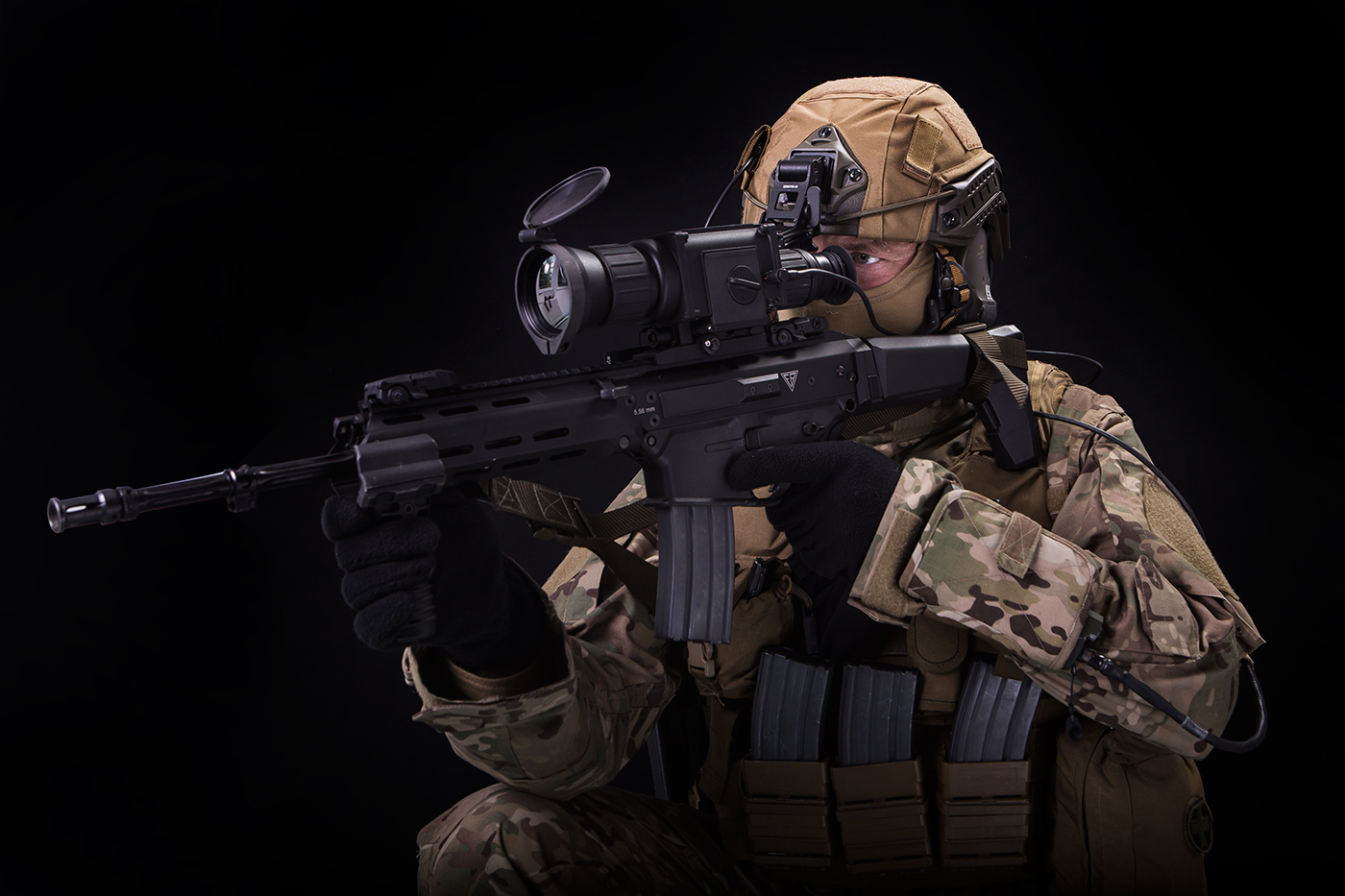Offer as a consortium
Future Soldier

PCO S.A. is a leader of the consortium which works on the Polish TYTAN future soldier system. The company also acts as the main integrator of the new system. The new initiative is being developed within the scope of the Polish Armed Forces modernization process.
Advanced orientation and target detection system, which is to be used during operations is the main feature of TYTAN. Currently, PCO S.A. has helmet-mounted cameras and thermal sights at its disposal. These devices are to be implemented in the TYTAN Polish Future Soldier equipment bundle.
The equipment includes, inter alia, SCT RUBIN thermal sight, and miniaturized MU-3M KOLIBER night vision monocular, which may be used together with the SCT sight. It may also be applied as a helmet-mounted sight.
The TYTAN system is to utilize new types of small arms – MSBS-5.56 Rifle and 9 mm pistols, both of which are being developed by the Fabryka Broni ‘Łucznik’, in cooperation with the Military University of Technology. Other Polish companies are involved in the development process, supplying communication systems, data transmission network, IFF system and a system which would warn the soldiers about being detected by the enemy.
SWPL-1 CYKLOP flight parameters display system

SWPL-1 CYKLOP system has been designed in order to make it possible to visualize the flight parameters of the Mi-17 helicopters for the pilots, without any need of looking at the instrument panel. All the relevant data is presented by the helmet mounted flight data presentation system displays.
SWPL-1 CYKLOP system consists of three sub-systems: two types of helmet-mounted HUD-type displays (DWN-1 i NWN-1), KG-1 graphical computer and adjustment devices, which are installed on-board of the aircraft. DWN-1 daylight helmet-mounted display is being installed directly on the THL-5 helmet, in a way which practically has no limiting impact on the pilot’s freedom of movement or visibility.
Thanks to the SWPL-1 CYKLOP device, the pilot receives most of the information needed to carry out his mission instantly. They are visualized with the use of MIL-STD-1787B compliant graphical symbols and in a graphical form.
The displayed information include the flight parameters (such as climbing speed), navigation information (altitude and heading) and engine control parameters (16 parameters in 4 variants, selected independently by both pilots), emergency warnings (WARN) and indication of failures of the on-board systems (FAIL) – with 27 warning and failure statuses.



WIDEO: Defence24 Days 2025: Premier Defence & Security Conference in CEE